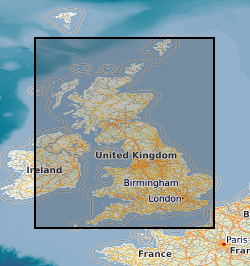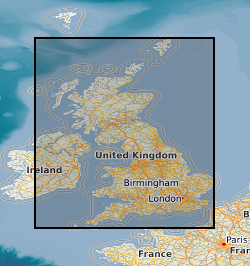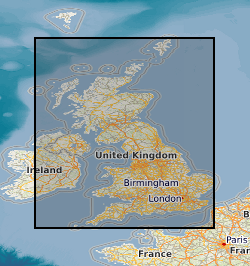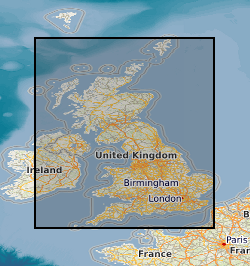Hydrocarbons
Type of resources
Available actions
Topics
Keywords
Contact for the resource
Provided by
Years
Formats
Representation types
Update frequencies
Scale
-

The aim is to realise the potential of hydropyrolysis (pyrolysis assisted by high hydrogen gas pressures) as a means to provide reliable molecular fingerprints for severely biodegraded oils, contaminated cores, oil-field solids (tar mats and pyrobitumens) and to provide novel information on basin-filling history where the conventional free-biomarker approach fails. This will then facilitate rapid and accurate oil-source and oil-oil correlations to be determined for the first time in ocean-margin regions. The study will establish a firm base to exploit the commercial potential of hydropyrolysis, both in terms of oil exploration through the new correlations with bound biomarker profiles and of characteristic sedimentary organic matter as a far superior technique to py-GC-MS. Indeed, innovative experimental protocols for conducting hydropyrolysis will continue to be developed to have a prototype system ready for future exploitation.
-

Surface sediment geochemistry data comprised of:1) trace metals; 2) Pb isotope ratios; 3) organic pollutants (pharmaceuticals, hydrocarbons and organochlorines and microtox bioassay). Sediments were collected from sites situated along Nairobi, Mathare and Ngong Rivers, Nairobi, Kenya on January 16th, 2020. This data is published in the following research paper which should be cited; Vane, C.H., Kim, A.W., Lopes dos Santos, R.A., Gill, J.C., Moss-Hayes, V., Mulu, J.K., Mackie, J.R., Ferreira, A.M.P.J., Chenery, S.R. and Olaka, L.A., 2022. Impact of organic pollutants from urban slum informal settlements on sustainable development goals and river sediment quality, Nairobi, Kenya, Africa. Applied Geochemistry, 146: 105468. https://doi.org/10.1016/j.apgeochem.2022.105468
-

Confidential data carried out for hydrocarbons etc.
-

to provide reliable molecular fingerprints for biodegraded crude oils and contaminated sediment cores and to facilitate correlation studies The aim is to demonstrate the potential of hydropyrolysis (pyrolysis assisted by high hydrogen gas pressure) as a novel means to provide reliable molecular fingerprints for biodegraded oils and contaminated cores where conventional biomarker approaches fail. This will then facilitate accurate and rapid oil-source and oil-oil correlations to be determined for the first time in these situations. New experimental protocols for conducting hydropyrolysis on asphaltenes will be developed. The study will establish a firm base to exploit the commercial potential of hydropyrolysis, both in oil exploration and for characterising sedimentary organic matter as a far superior technique to pyrolysis-GC-MS through a larger industrial partner.
-

Microfossil analyses carried out offshore for hydrocarbons etc. Commercial in Confidence.
-

The Index to the Primary Geological Data resulting from Open Cast Coal exploration. The index lists the content of the boxes of data, including reports, interpretations and records of research in British coalfield areas. The Index lists information on past and current workings and for future prospects. The majority of the collection was deposited with the National Geological Records Centre by the Coal Authority in July 2001, but a small number of BGS records have been added subsequently.
-

High level index to the contents of the boxes of Primary Geological Data resulting from deep underground coal exploration and exploitation in Great Britain donated by the Coal Authority in July 2001. Data for past and current collieries and for future prospects including borehole site plans, borehole logs , analyses and geophysical data etc. This index will diminish in importance as these data are merged with existing collections.
-

Index, set up in 1998, to the archive collection of reports, notebooks interpretations, plans and other geological or related data received from external organisations that are not part of other collections. These cover a wide variety of different types and ages of information mainly from Great Britain but some related to BGS projects overseas.
-

Concentrations of total organic carbon (TOC), total petroleum hydrocarbons, polycyclic aromatic hydrocarbons (PAHs) and polychlorinated biphenyls (PCBs) were determined in 84 near-surface soils (5-20 cm depth) taken from a 255 km2 area of Glasgow in the Clyde Basin, UK, during July 2011. Total petroleum hydrocarbon ranged from 79-2,505 mg kg-1 (mean 388 mg kg-1; median 272 mg kg-1) of which the aromatic fraction was 13-74 % (mean 44 %, median 43 %) and saturates were 28-87 % (mean 56 %, median 57 %). Σ16 PAH varied from 2-653 mg kg-1 (mean 32.4 mg kg-1; median 12.5mg kg-1) and Σ31 PAH range was 2.47-852 mg kg-1 (mean 45.4 mg kg-1; median 19.0 mg kg-1). PCB tri-hepta range was 2.2-1052 mg kg-1 (mean 32.4 mg kg-1; median 12.7 mg kg-1) and the ΣPCB7 was 0.3-344 mg kg-1 (mean 9.8 mg kg-1; median 2.7 mg kg-1). This data is associated with the published research paper https://doi.org/10.1017/S1755691018000324 Kim, A.W., Vane, C.H., Moss-Hayes, V. Berriro, D.B., Fordyce, F., Everrett, P. Nathanail, P.C. 2018. Polycyclic aromatic hydrocarbons (PAH) and polychlorinated biphenyls (PCB) in urban soils of Glasgow, UK. Earth and Environmental Science Transactions of the Royal Society of Edinburgh 108, 2-3, 231-248.
-

Scanned images of primary Geological Data resulting from deep underground coal exploration and exploitation. Collection of data includes reports, interpretations and records of research in British coalfield areas deposited by the Coal Authority. Data for past and current collieries and for future prospects. The majority of the collection was deposited with the National Geological Records Centre by the Coal Authority in July 2001. The collection includes borehole site plans, borehole logs , analyses and geophysical data etc. A large percentage of this data will eventually be linked to existing collections.
 NERC Data Catalogue Service
NERC Data Catalogue Service